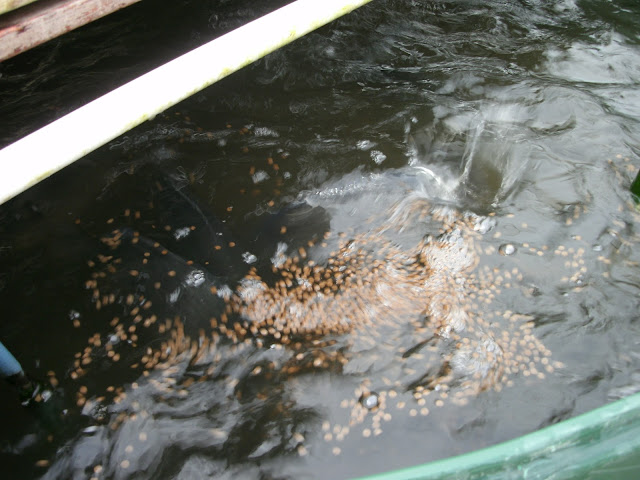The maremma sheepdog has started panting which means that winter has ended and spring has arrived, all of the trees seem to be in agreement, now there is no way to escape the inevitable and desperately necessary spring cleaning that needs to be done.

I think that the chook pen is going to be my new favourite place to visit when the heat of summer comes around. The forage trees have burst into life and come out in their spring greens. The original plan was to put all of the messy trees within the confines of the chicken run so that the chooks could clean up the fruit fall and and have something to do before they get let out into the rest of the yard in the afternoon.
The thick plantings have delivered a lot of additional benefits with the protection that they offer newly hatched chicks from the constant patrol of hawks above our yard. The temperature in the chook run is also pleasantly cooler then the open areas of the yard.

Although we are getting lots of bananas I still think that the biggest success of the run is the cluster planting of mulberry trees. I really wasn’t sure how this would work when I planted 5 mulberry trees in a 4 square meter area but so far it is successful. I had read that mulberry trees are often selected as a hedge plant on farms so it seemed like a good choice for close plantings.
The spindly branches wind together creating a sort of super mulberry tree that is producing a tremendous amount of fruit even though they are only a couple of years old. The main problem that I have is beating the birds to the fruit as I am not the only one who finds them a delicacy.
Last years bird netting has been grown through so at the moment I am letting the birds have what is above the netting and I get to pick everything below the netting.


The last of the winter tomato vines were starting to look a little sorry for them selves so I picked what was left of the fruit and cleaned the bathtub out to take some golden corn and green bean seedlings.
One bathtub has been providing me with good number of tomatoes throughout winter and the variety ‘Yellow Perfection’ turned out to be a very pleasant snacking fruit with a sweet taste that has none of the acidic bite that you get in most varieties.
Tomato 'Yellow Perfection'
http://greenharvest.com.au/SeedOrganic/VegetableSeeds/Tomato.html
The only tomatoes that I have had success with before where the ‘Tommy Toe’ varieties as the fruit fly's were decimating everything else. I am still to find out whether the success that I had with this crop were just because they were planted in winter or whether the heavy fruit fly trapping program that I have started is beginning to have an affect.

The Jaboticaba hedge has really taken off and is due for a good pruning. Spanning about 15 meters the hedge was planted to block of the view of the aquaponics water tanks that sit behind it. I decided to use Jaboticaba as it not only made an attractive hedging plant but is also an abundant producer of fruit that can be used for making your own wines and ports. It has been in for 3 years now and is doing very well but is a long way of fruiting yet.

When I first looked into the Jaboticaba I read that it can take up to 11 years for the plant to start fruiting. This was something that I was prepared to accept but I later found out that the fruiting times can be much shorter.
I saw an article that Rich from
Happy Earth wrote about their Jaboticaba which was already fruiting after a few years, I wrote to him and asked about this and was told that if you give them deep rich soil and lots of water then they start producing a lot earlier.
This is good news to me as I planted mine in a deep trench of cow manure and they get the excess run off from the AP system which is rich in fish waste. Hopefully this means that we can look forward to some Jaboticaba Port in a few years.

Here is attempt two at getting some peaches before the fruit fly do. Last year I was really surprised that my 2 year old low chill peach tree had already exploded in fruit. It was so heavy that I was picking off some of the fruit and disposing of it so that the young branches didn’t snap.
Unfortunately all of the mature fruit was destroyed by a fruit fly infestation and had to be thrown away. This year I stated trapping in winter to try and get ahead of the problem and used some bottle traps with ‘Wild May’ lure in them. This only attracts the male fruit fly but makes it

harder for the females to find a mate. I also juiced a bucket of excess lemons and added yeast, sugar and cloudy ammonia to the juice to see if that would catch the females.
The first few lots of mixture had a large number of fruit fly in them and the catch is getting less and less with each refill so either the word is getting out that you should stay away from the bottles or it is starting to have an affect.
 Greg Rutter
Greg Rutter




















































